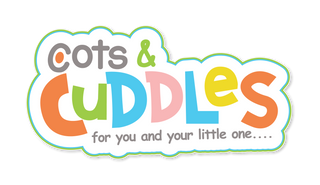Introduction:
The parent-child bond refers to the emotional connection and attachment formed between a parent and their child. It is a deep, enduring, and reciprocal relationship that plays a vital role in the child's overall development and well-being. The bond is characterized by love, trust, empathy, and a sense of security. A strong parent-child bond is essential for the child's emotional, social, and cognitive growth. It provides a foundation for healthy relationships, self-esteem, and emotional regulation. The bond is nurtured through consistent and positive interactions, including physical touch, communication, and responsive parenting.
Building a strong and positive parent-child bond is a foundational aspect of parenting that greatly influences a child's overall development and well-being. This bond becomes even more crucial during a child's toddler years. Toddlers are in a period of rapid growth and exploration, making this stage both exciting and challenging for parents, especially mothers. The parent-child bond refers to the emotional connection and attachment formed between a parent and their child. It is characterized by love, trust, and mutual understanding, and serves as the cornerstone for a child's social, emotional, and cognitive development. The bond established during early childhood lays the foundation for future relationships, self-esteem, and overall mental health.
 During the toddler years, the parent-child relationship undergoes significant changes. Toddlers begin to assert their independence, explore their surroundings, and develop their unique personalities. While this newfound independence is essential for their growth, it can also create challenges for mothers as they navigate through this phase. Mothers of toddlers often face various obstacles in building and maintaining a positive parent-child bond. These challenges can include separation anxiety and attachment issues, sleep and bedtime struggles, communication and language development hurdles, as well as behavioral issues and tantrums. Understanding these obstacles and finding effective strategies to overcome them is crucial for fostering a strong parent-child bond.
During the toddler years, the parent-child relationship undergoes significant changes. Toddlers begin to assert their independence, explore their surroundings, and develop their unique personalities. While this newfound independence is essential for their growth, it can also create challenges for mothers as they navigate through this phase. Mothers of toddlers often face various obstacles in building and maintaining a positive parent-child bond. These challenges can include separation anxiety and attachment issues, sleep and bedtime struggles, communication and language development hurdles, as well as behavioral issues and tantrums. Understanding these obstacles and finding effective strategies to overcome them is crucial for fostering a strong parent-child bond.
In this article, we will delve into the importance of building a positive parent-child bond during the toddler years. We will explore the impact of bonding on a child's emotional, social, and cognitive development. Additionally, we will address the common problems faced by mothers of toddlers and provide practical solutions to navigate through these challenges successfully.
Understanding the Importance of a Positive Parent-Child Bond

1.1 The Significance of Bonding in Early Childhood
Building a strong parent-child bond during early childhood is crucial for the overall development and well-being of the child. This bond forms the foundation of the child's emotional security, social competence, and cognitive abilities. A positive parent-child bond provides a sense of safety and trust, allowing the child to explore and learn about the world with confidence.
Research has shown that children who have a secure attachment with their parents are more likely to have better self-esteem, healthier relationships, and improved academic performance. They also exhibit higher levels of emotional intelligence and resilience, which help them navigate through life's challenges effectively.
When parents establish a positive bond with their child, they create a secure base from which the child can explore their environment. This bond serves as a source of comfort and support, enabling the child to develop a healthy sense of self and a positive outlook on life.
1.2 The Role of Bonding in Toddlerhood
During the toddler years, the parent-child relationship undergoes significant changes. Toddlers begin to assert their independence and explore the world around them more actively. However, maintaining a strong bond during this stage remains crucial for their healthy development.
A positive parent-child bond in toddlerhood fosters a sense of security, which helps toddlers navigate their newfound independence. When children feel securely attached to their parents, they are more likely to explore and take risks, knowing that their parents are there to provide guidance and support.
Furthermore, a strong parent-child bond positively influences a toddler's behavior and discipline. When parents have established a trusting relationship with their child, discipline becomes more effective as the child is more likely to understand and respond to guidance. A solid bond also enhances communication between parents and toddlers, allowing for better understanding and cooperation.
By nurturing the parent-child bond during the toddler years, parents can lay the groundwork for a resilient and emotionally connected relationship that will continue to evolve throughout their child's life.
Common Challenges Faced by Mothers of Toddlers

2.1 Separation Anxiety and Attachment Issues
Separation anxiety is a common challenge faced by both toddlers and parents. It refers to the distress or anxiety that toddlers experience when separated from their primary caregivers, usually their mothers. This can occur when mothers leave the room or when toddlers are separated from their mothers for more extended periods, such as during daycare or preschool.
Separation anxiety is a natural part of a child's development and typically emerges around 8 to 14 months of age. It stems from the deep emotional bond that toddlers have formed with their mothers and their growing awareness of object permanence – the understanding that objects or people continue to exist even when they are out of sight.
To ease separation anxiety and strengthen the attachment bond with your toddler, consider the following strategies:
-
Gradual Separation: Start with short separations and gradually increase the time apart to help your child build trust and confidence in your return.
-
Consistent Routine: Establishing a consistent daily routine can provide a sense of security and predictability for your toddler, reducing anxiety when separations occur.
-
Transition Objects: Encourage your child to have a special toy, blanket, or comfort item that they can take with them when separated from you. This object can provide a sense of familiarity and comfort.
-
Reassurance and Predictability: Offer reassurance to your child before and during separations. Let them know when you'll be back and follow through with your promises to build trust.
2.2 Sleep and Bedtime Challenges
Sleep disruptions and bedtime battles are common challenges faced by mothers of toddlers. Many toddlers experience difficulties in falling asleep or staying asleep through the night, which can impact both the child's and the parent's well-being.
Establishing a consistent bedtime routine is key to promoting healthy sleep habits. Consider the following strategies:
-
Bedtime Ritual: Create a calming and predictable routine before bed, such as reading a book, singing a lullaby, or having a warm bath. This signals to your toddler that it's time to wind down and prepare for sleep.
-
Sleep Environment: Ensure that your child's sleep environment is conducive to restful sleep. Keep the room dimly lit, maintain a comfortable temperature, and remove any distractions or stimulating toys.
-
Settle Techniques: Teach your child self-soothing techniques, such as deep breathing or using a transitional object, to help them feel secure and fall back asleep independently when they wake up during the night.
-
Consistency and Patience: Be consistent with the bedtime routine and respond to nighttime wake-ups consistently. It may take time for your toddler to adjust, so remain patient and supportive during this process.
2.3 Communication and Language Development
Toddlers between the ages of 1 and 2 years are rapidly developing their communication and language skills. However, they may face challenges in expressing their needs and understanding verbal cues, which can lead to frustration for both the child and the parent.
To support your toddler's communication and language development, consider the following strategies:
-
Active Listening: Pay close attention to your child's attempts to communicate and provide your full attention. Show interest and respond to their gestures, sounds, and words, even if they are not yet fully formed.
-
Responsive Interactions: Engage in responsive interactions with your toddler by imitating their sounds or actions, expanding on their words, and asking open-ended questions to encourage conversation.
-
Language-Rich Environment: Surround your child with a language-rich environment by reading books, singing songs, and engaging in conversation throughout the day. Narrate daily activities and describe objects and events to enhance their vocabulary.
-
Play and Storytelling: Encourage imaginative play and storytelling. Provide opportunities for your toddler to use their creativity and language skills through pretend play, role-playing, and storytelling with toys or puppets.
2.4 Behavioral Issues and Tantrums
As toddlers strive for independence and autonomy, they may exhibit challenging behaviors and have frequent tantrums. These behaviors are often a result of their limited ability to express their needs, desires, and emotions effectively.
To address behavioral issues and manage tantrums positively, consider the following strategies:
-
Understanding Triggers: Observe and identify the common triggers for your child's challenging behaviors. It could be hunger, tiredness, overstimulation, or a need for attention. Anticipating and addressing these triggers proactively can help prevent tantrums.
-
Positive Discipline Techniques: Avoid punitive measures and instead focus on positive discipline strategies. Set clear and age-appropriate limits, redirect your child's attention to more appropriate activities, and praise their positive behaviors.
-
Emotional Regulation: Teach your child age-appropriate strategies for emotional regulation, such as deep breathing, counting to ten, or using a calming sensory object. Help them understand and express their emotions in a healthy way.
-
Problem-Solving Skills: Encourage problem-solving skills by involving your toddler in finding solutions to minor conflicts or challenges. This empowers them to develop autonomy, critical thinking, and decision-making abilities.
Strategies for Building a Positive Parent-Child Bond

3.1 Quality Time and Engagement
Spending quality time and engaging with your toddler is vital for building a strong and positive parent-child bond. It allows you to connect on a deeper level, understand your child's needs, and create lasting memories together. Consider the following strategies to maximize the quality time you spend with your toddler:
-
Child-led Play: Engage in child-led play, where you follow your toddler's lead and participate in activities they enjoy. This promotes their autonomy, creativity, and self-expression, while also fostering a sense of connection and joy.
-
Uninterrupted Attention: When you spend time with your toddler, give them your undivided attention. Put away distractions like phones or other electronic devices, and actively engage in the moment. This shows your child that they are valued and important to you.
-
Special Activities: Plan special activities or outings that cater to your toddler's interests and developmental stage. It could be a trip to the park, a visit to the zoo, or a simple arts and crafts project at home. These activities create shared experiences and strengthen your bond.
-
Mealtime Connection: Make mealtimes a time for connection and conversation. Sit together as a family, engage in meaningful discussions, and encourage your toddler to share their thoughts and experiences. This fosters communication and a sense of belonging.
3.2 Responsive Parenting and Empathy
Responsive parenting and empathy are key ingredients in building a positive parent-child bond. By being attuned to your toddler's needs and emotions, you create a nurturing and supportive environment. Consider the following strategies to enhance responsive parenting:
-
Active Listening: Practice active listening by paying attention to your child's verbal and non-verbal cues. This helps you understand their feelings, validate their emotions, and respond appropriately. Reflect their words or emotions back to show that you genuinely understand.
-
Emotional Support: Offer emotional support when your child is upset, frustrated, or experiencing challenging emotions. Comfort them, provide a safe space to express themselves, and offer reassurance. This helps them develop emotional intelligence and a secure attachment.
-
Empathetic Validation: Validate your child's feelings and experiences. Let them know that their emotions are normal and understandable, even if you don't always agree with their perspective. This validation builds trust and strengthens the parent-child bond.
-
Problem-solving Together: Involve your child in problem-solving situations. Encourage them to think through challenges and brainstorm solutions together. This empowers them, teaches critical thinking skills, and reinforces their trust in your guidance.
3.3 Nurturing Physical Touch and Affection
Physical touch and affection play a vital role in building a positive parent-child bond. They provide comfort, security, and a sense of belonging. Consider the following strategies to incorporate physical touch and affection into your daily interactions:
-
Cuddling and Hugging: Make time for cuddling and hugging your toddler. These physical displays of affection create a sense of warmth, love, and security. Cuddle together during story-time, offer hugs when they are upset, and initiate physical contact throughout the day.
-
Gentle Touch: Incorporate gentle touch into your daily routines. This can be through gentle strokes on their back, holding hands during walks, or rubbing their feet during bedtime. These small gestures convey love and care.
-
Baby-wearing: Consider using a baby carrier or sling to keep your toddler close to you during daily activities. This physical closeness promotes bonding and provides a sense of security for your child.
-
Positive Physical Interactions: Engage in physical play, such as tickling, playing peek-a-boo, or dancing together. These interactions elicit laughter, create joyful moments, and strengthen the parent-child bond.
Conclusion:
Building a strong and positive parent-child bond during the toddler years is a journey that requires patience, understanding, and consistent effort. It is during this crucial period of development, that the parent-child relationship plays a significant role in shaping a child's emotional, social, and cognitive well-being. Throughout this article, we have explored various aspects of building a positive parent-child bond, addressing the specific challenges faced by mothers of toddlers. By understanding the importance of bonding in early childhood, we have emphasized the impact of a strong parent-child bond on a child's overall development.
We have discussed common problems faced by mothers of toddlers, such as separation anxiety, sleep challenges, communication issues, and behavioral struggles. These challenges can sometimes strain the parent-child bond, but by recognizing them and implementing appropriate strategies, mothers can overcome these obstacles and strengthen their connection with their little ones. In the quest to build a positive parent-child bond, we have highlighted several strategies that can make a significant difference. Spending quality time and engaging in age-appropriate activities with your toddler create opportunities for bonding and shared experiences. Responsive parenting and empathy play a crucial role in understanding your child's needs and emotions, building trust and connection. Nurturing physical touch and affection through cuddling, hugs, and kisses provides comfort and reassurance to your toddler.

It is important to remember that building a strong parent-child bond takes time and effort. Every small step you take towards fostering a positive connection lays a strong foundation for your child's future well-being and success. Embrace the journey of parenthood with patience and love, and cherish the precious moments spent with your child. By prioritizing the emotional connection with your toddler, addressing the challenges faced by mothers, and implementing effective strategies, you can create a nurturing environment that not only strengthens the bond between you and your child but also fosters their healthy development and lifelong connections. As a parent, you have the power to shape your child's future, and building a positive parent-child bond is a vital part of that journey. Embrace the joys and challenges that come with parenting a toddler, and watch as your bond grows stronger with each passing day.

